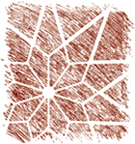January 8. Pauli Murray was ordained a priest at the Washington National Cathedral by the Rt. Rev. William F. Creighton, bishop of the (Episcopal) Diocese of Washington. She was the first African American woman, and one of the first women, to be ordained a priest in the Episcopal Church.
February 13. At the invitation of the rector of The Chapel of the Cross, Chapel Hill NC, the Rev. James Peter Lee, The Rev. Dr. Murray celebrated her first Eucharist. She read from her grandmother Cornelia Smith‘s Bible, from a lectern that had been given in memory of the woman who had owned Cornelia, Mary Ruffin Smith. This was the first time a woman celebrated the Eucharist at an Episcopal church in North Carolina. In her autobiography (1987), p. 435) Pauli described her thoughts about the service, which our Parish Historian Mary Chitty attended:
Whatever future ministry I might have as a priest, it was given to me that day to be a symbol of healing. All the strands of my life had come together. Descendant of slave and of slave owner, I had already been called poet, lawyer, teacher, and friend. Now I was empowered to minister the sacrament of One in whom there is no north or south, no black or white, no male or female – only the spirit of love and reconciliation drawing us all toward the goal of human wholeness.
See also:
- The Episcopal Archives’ Leadership Gallery features video coverage of Murray offering the Eucharist in her grandmother’s church, which was later published in 1985 by the television series “On the Road”.
- Pauli Murray
- Timeline entries: 1951, 1970, 1973, 1974, 1985, 1987, 2012 & 2015.




